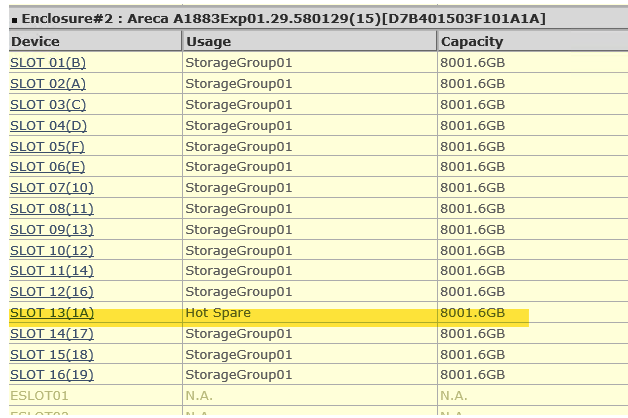a.) A RAID5 system is a group of hard drives that are at least 3 drives or more and has (1) Hot Spare drive when there are 16 drives in a system. Platform Studio Systems will have 8 drives and no Hot Spare.
b.) A RAID5 can allow up to (1) drive failure. If at any point that an additional drive fails, there is data loss.
c.) Data on a raid is spread across all active drives. Essentially each drive will hold bits and pieces of all data and data is not partitioned on a single drive. In terms, you will not find a file that lives on a specific drive as it lives across all the drives that are part of the RAID.
d.) Below is an example of a 16-bay system.
**Note that there are 15 hard drives that are part of this RAID and (1) Hot Spare. The RAID consists of the 15 drives and can fail up to (1) drive.
If a drive does fail, the Hot Spare will be used to then rebuild the RAID data onto that drive. Once that rebuild is done, the RAID would be in normal state and have 15 complete drives and the failed drive will need to be replaced. Please see document here on how to identify the failed drive to remove. Once replaced, the new drive will need to become the new Hot Spare. Please see this document here on how to create a hot spare.

e. Platform Studio systems will only have 8 drives total and no Hot Spare. if at any point there is a drive failure, you will need to replace the failed drive. Please see document here on how to identify the failed drive to remove. Once replaced, the new drive will need to become the new Hot Spare. Please see this document here on how to create a hot spare for the system to rebuild to the replacement drive.
